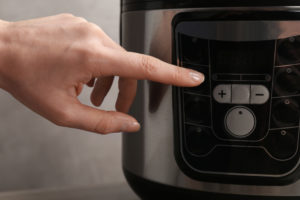It’s only in the last little over a year that we’ve heard a lot about Takata air bag recalls. But according to the National Highway Traffic and Safety Administration (NHTSA), the company was aware of problems with its air bags as far back as 2004.
Though early ruptures were thought to be caused by isolated manufacturing problems, it became more clear with later accidents in which vehicle occupants were seriously injured and sometimes killed that something else was going on. Yet Takata waited until this year to issue a formal apology and expand recalls to all 50 states.
First Takata Air Bag Rupture Occurs in 2004
The NHTSA states that as far as they know, the first air bag explosion related to the current Takata air bag problems occurred in February 2007. It involved a 2001 Honda Civic, and Honda remains the automaker most affected by Takata air bag problems to this day.
There was another explosion in 2004, but so far it is considered an “anomaly” and unrelated to the later ruptures that have injured over 100 people and killed at least eight. Following the first incident in 2007, three more incidents occurred between 2007 and 2008, all in Honda vehicles.
Honda implemented the first Takata air bag recall in late 2008, but selected just shy of 4,000 vehicles for repairs. At the time, Takata stated that the ruptures had occurred because of improper handling of the propellant at just one plant, leading many to believe that the problem was of limited scope.
2009 Takata Air Bag Problems Blamed on One Machine
Honda’s first recall didn’t fix the problem though. In 2009, two more reports came in of Takata air bags exploding, again in Honda vehicles. In one of those incidents the driver died because of his injuries. Honda responded by expanding its previous recalls to include the vehicles involved.
An NHTSA investigation at that time revealed that Takata had decided the problems were caused by a defective machine at one particular plant. This machine shaped the propellant into a “wafer” and apparently did so in such a way as to make the propellant burn too quickly.
Takata had stopped using that machine, they explained, so Honda again expanded their recall to include vehicles with these propellants.
Honda’s Recalls Insufficient as More Takata Air Bags Explode in 2011
Unfortunately, Takata’s explanation again came up short, as more flaws were revealed in 2010 and 2011. Honda expanded its recalls in April 2011 for the fifth time, this time because of supposed manufacturing errors in creating some of the air bag inflators. But it wasn’t enough.
In December 2011, another incident occurred in a vehicle not yet covered in all the previous recalls. Honda responded with another recall, bringing their total to over one million vehicles recalled. Up to that point, all of the accidents had occurred with driver side air bags, but in October 2011 a rupture occurred in a passenger air bag. The companies believed it to be an anomaly until another report in November, indicating a second passenger air bag ruptured in Puerto Rico. At that point, Honda expanded its own investigations into both driver and passenger side air bags.
Ammonium Nitrate Comes Into Question
Recently, the chemical used in Takata’s air bag propellants has been under increased scrutiny as being a potential factor in causing these air bags to explode. It’s called “ammonium nitrate” and when Takata started using it in 2001, the company’s own engineers expressed concern because of the chemical’s inherent instability.
According to the New York Times, back in 2010, Takata and Honda commissioned a study on ammonium nitrate—and then did not disclose the results. It wasn’t until 2013 that Honda said anything to the NHTSA about the chemical, stating that the “wafers” made in 2001 and 2002 may have been damaged by moisture, making them more prone to overheating.
Based on this new information, Takata implemented a recall of older model vehicles that were affected by inflators containing these defective propellant wafers. At this time, other automakers implemented recalls as well, including BMW, Mazda, Nissan, and Toyota.
Takata Waits Until 2015 to Expand Recalls Nationwide
Three more reports of air bag explosions came in between 2013 and 2014, prompting another investigation. Takata confirmed they had all occurred in hot, humid areas like Florida and Puerto Rico, and limited recalls to such areas, believing it was only those conditions that would prompt an explosion.
In late 2014, the NHTSA encouraged Takata and all vehicle manufacturers involved in the recalls to expand them beyond regional areas. Takata refused, insisting it was only in limited climates that were at risk for air bag explosions, but the vehicle manufacturers complied, expanding recalls nationwide.
The NHTSA upgraded their investigation, looking more closely at the defective inflators, and continued to urge Takata to do more. Finally, in May 2015, the company acknowledged a potential nationwide defect in certain types of driver and passenger air bag inflators, and expanded their recalls accordingly.
NHTSA Reports on Takata Air Bag Injuries and Deaths
The NHTSA reports that as of October 20, 2015, they know of the following incidents in the United States:
• 89 driver air bags that ruptured
• 32 passenger air bags that ruptured
• 98 alleged injuries related to Takata air bag ruptures
• 7 deaths attributed to Takata air bag ruptures (the 8th occurred out of the country)
The NHTSA adds that “in round numbers, nearly 1 in 10 driver inflator ruptures has resulted in death.” They continue to investigate the cause of these ruptures, and to promote the efficient repair of all affected vehicles.

Focusing on representing injury victims nationwide in product liability and complex personal injury litigation, Mr. Cohn has litigated a wide-array of cases against numerous manufacturers, employers, landowners, and negligent third-parties—resulting in many multi-million dollar recoveries. In addition to working for nationwide plaintiffs firms in New York, he is also a former Manhattan Assistant District Attorney.










Comments for this article are closed.